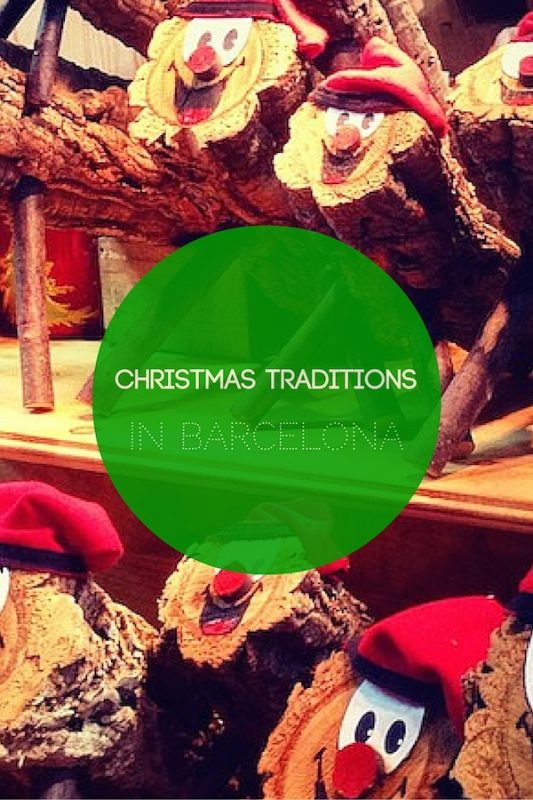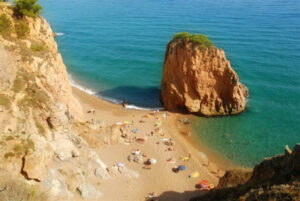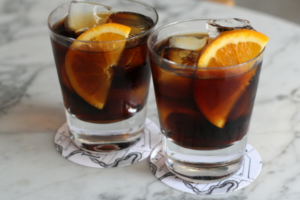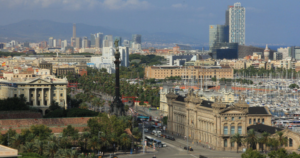Last Updated on November 15, 2025 by Emma Fajcz | Published: December 10, 2017
Though Spain celebrates many of the same holiday traditions as the rest of Europe and the western world, many of theirs are uniquely Spanish, and here in Barcelona, you can also find special customs specific to Catalonia.
In fact, you could even say that some of these Christmas traditions in Barcelona will probably surprise you a lot more than you’d expect!
The Special Days During the Holiday Season
The holiday season here in Spain and Catalonia stretches out much longer than what many countries are used to. That’s because of the 6th of January. The Epiphany, is one of the main holidays. A brief mention of the special days during the holiday season would include:
- La Immaculada, or the Immaculate Conception. It is not necessarily known as a special occasion. Although it is a recognized holiday and is traditionally known as the first day of the festive season.
- Nit de Nadal, or Christmas Eve. This is positively a day of family and feasting. It is also one of small gifts from one of the most beloved Catalan Christmas characters. The Tió de Nadal (see below).
- Nadal, or Christmas day, is another day of a big feast with family. Though not typical of Catalonia or Spain, some families nowadays will recognize Santa Claus. Christmas traditions in Barcelona have evolved to become more European in recent years.
- Sant Esteve, or Saint Stephen’s Day. Obviously, this falls on the day after Christmas and is also a holiday here in Catalonia. Traditionally, people eat cannelloni at home, made with the leftovers of Christmas lunch.
- Cap d’Any, or New Years, is just as big of a celebration as any. Suprisingly though don’t expect fireworks in the Catalan capital.
- Reis, or Three Kings Day, falls every year on the 6th of January. There is a parade, and children usually open presents brought to them by the different kings.
Now that we have the important days figured out, throughout the holiday season, keep your eye out for these other Christmas traditions in Barcelona.
Caganer
Christmas trees, lights, and mistletoe are all part of the holiday decorations. Although the people of Spain are, in general, most passionate about their nativity scenes, known as belenes or pesebres. Here in Catalonia, however, this tradition is taken to the next level. Here in Catalonia we have a slight obsession with one of the figurines that no nativity scene would be complete without—the caganer.
The caganer, literally the shitter, depicts one of the village folk dropping his pants and relieving himself among the other townspeople and animals present at the birth of Christ. He is so popular, plays such a key role in Christmas tradition, that you will find him everywhere throughout the month of December. That includes souvenir shops, Christmas markets, even the official City Hall nativity scene has one. Furthermore, expect to find famous personas, anyone from Barrack Obama to Lionel Messi, depicted as the caganer.

Tió de Nadal
They say Catalans have a bizarre compulsion for all things scatological. Furthermore, after learning about Christmas traditions in Barcelona, you wouldn’t be surprised why. Yet another cherished character of the holiday season, and again specific to Catalonia, the Tió de Nadal. This little guy is more commonly referred to as the cagatió. He reigns the month of December as a loving gift bearer in, ahem, one of the strangest ways.
Whereas Santa comes down the chimney with an enormous bag of toys, or the three kings ride in on a lustrous carriage filled with gifts, the cagatió, a log with a smiley face and a red cape, relieves himself of his Christmas delights usually on Christmas Eve or Christmas day. As tradition has it, the log once signified giving the gift of light and warmth during the cold Christmas mass. However, somehow, somewhere, this deep metaphor has morphed into one that all children, unsurprisingly, absolutely adore.
During the weeks leading up to Christmas, they feed the log. Finally, when the time has come, they dance around him, singing and hitting him with a stick until he magically defecates some small gifts or sweets. Always these are similar to what you might find in a stocking.
Christmas Sweets
Spanish bakeries and pastry shops still function on a seasonal basis, and you can expect to find them all stocked with special treats for the holiday season. A hard nougat bar called turrón is the most popular throughout Spain. Try also the softer blando type, made with almond paste and egg yolk, and the versatile chocolate version.
Another specialty is the neules, or cylindric wafers, that is also a typical gift of the aforementioned cagatió. During the Christmas season, most shops make them in-house, and are beyond delicious. They also never look exactly the same. Try the chocolate dipped ones for extra indulgence.
Spanish Christmas Lottery
One of the longest-running and biggest lotteries in the world, El Gordo, meaning, the big one is a huge Christmas tradition throughout all of Spain. People generally buy tickets in groups at work or with friends, despite the fact that nobody actually expects to win.
The Wisemen, or Three Kings, Parade
Though other traditions like Christmas trees and Santa Claus have slowly crept into Spain, the Three Kings remain the most important part of the holiday season for families with children. There are parades all throughout the country. Barcelona’s, the cavalcada de reis mags, is particularly special in that they arrive by boat. Imagine it as if from a child’s point of view, it is indeed pretty amazing.
After docking in Port Vell, the Magi make their rounds throughout the old city center. All the while, waving to the citizens of Barcelona who come out on the streets to greet them. That day, people also enjoy a delicious tortell de reis, or kings cake, a round, stuffed pastry cake that usually has some surprise inside.
Experience Barcelona’s Food Like a Local
Join one of our top-rated Barcelona food tours! With the help of our expert local guides, you’ll get to see, hear, and taste your way through this city and learn about its fascinating history and culture.









